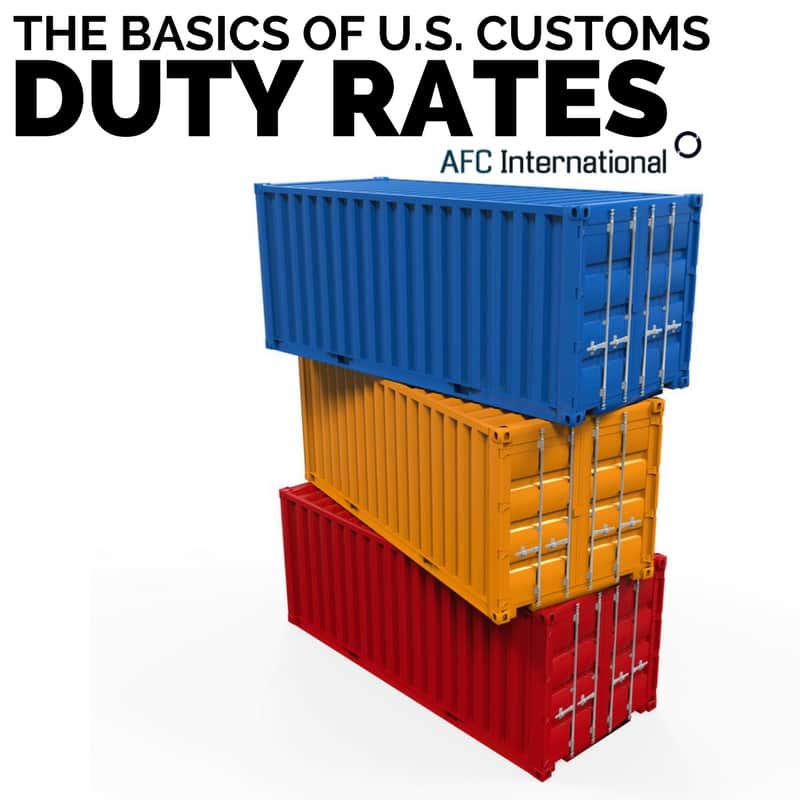Are your goods classified properly? Without proper classification, your goods can be delayed at the border and your United States customs duty rates may be incorrect. Learn the basics of U.S. customs duty rates to stay ahead of the importing process.
Classify Goods Properly

Under Federal regulation, importers are responsible for the proper tariff classification of their imports. The Harmonized Tariff Schedule (HTS) is an internationally recognized system of names and numbers to classify your goods. The HTS uses a hierarchical digit system to describe and classify your goods and register the proper duty, or tax, for them. The U.S. Customs and Border Protection (CBP) makes the final determination of the proper duty rates for your items.
You can review the HTS and access the U.S. International Trade Commission Tariff Database to get an approximate duty rate number for your particular imports.
Find the Right HTS Code
With more than 17,000 individual ten-digit HTS code numbers to classify your imported goods, it makes it more challenging to classify your goods properly without the help of a Licensed Customs Broker.
Most imports have their own section in the HTS, which clarifies what U.S. Customs Duty rate, or tax, you need to pay. Utilize the U.S. International Trade Commission HTS Search tool to help you find the right code. The right code helps your import process run more smoothly.
Take Advantage of Duty Drawbacks
Want some extra cash in your importer pockets? Duty drawbacks are tax refunds from the government. An estimated $2.4 billion in duty drawbacks are left unclaimed each year. To file for a duty drawback to potentially add extra revenue to your business, use one of the following duty drawbacks:

- Manufacturing drawbacks
- Substitution manufacturing drawbacks
- Same condition drawbacks
File Importing Resources Paperwork
The following import resources must be put together by an importer or a customs broker:
- A commercial invoice that lists the purchase price, country of origin and HTS tariff classification
- A packing list detailing your imports
- A bill of lading that lists goods in the form of a receipt
- An arrival notice from the U.S. agent

Hire a Customs Broker
A licensed customs broker can help your imports arrive on time while avoiding costly import process hurdles. Consider using a Customs Broker to help you with U.S. customs duty rates in the following scenarios:
- When you are importing items more than $2,000 in value
- When you are importing regulated items such as chemicals, pharmaceuticals or biological products
- When time is of the essence and you think the CBP may delay your U.S. import delivery.


Leave a Reply
You must be logged in to post a comment.